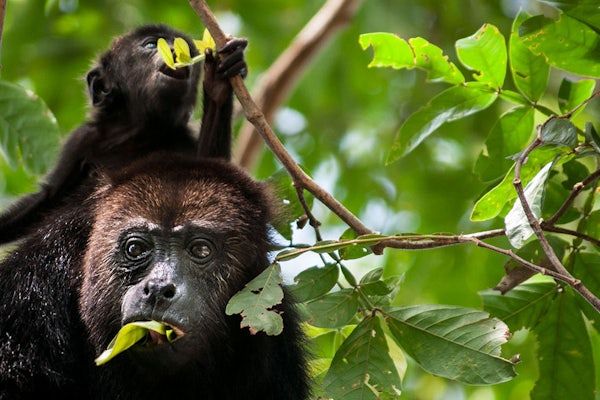Hidden microbiome fortifies animals, plants too
Symposium focuses on important but unseen role of microbes in diverse ecosystems

The microbiome is the collection of microbes that colonize a habitat, human body or otherwise. Because of pioneering microbiome research at Washington University School of Medicine in St. Louis, people around the world now understand much more about the fundamental role of gut microbes in human health and disease.
Animals and plants also rely on thousands of different microbes to help keep them alive. Although less is known about these associations, a new generation of scientists is exploring the relationships between a hidden army of microbes and the creatures they support and fortify. These Microbes of Diverse Ecosystems (mDivE-STL) were the focus of an Oct. 3 research symposium organized by the Living Earth Collaborative.
At several research institutions across St. Louis, researchers study both human and nonhuman microbiomes. This symposium was organized to help foster a community of researchers studying diverse microbial systems while benefiting from the great local strength in human microbiome expertise.

Visitors take a close look at "Parkey," a turtle tagged and tracked as part of the St. Louis Box Turtle Project. With support from the Living Eart Collaborative, researchers have expanded the project to characterize the native microbiomes of the three-toed box turtles. (Photo: Sid Hastings/Washington University)
Take, for example, researchers studying black howler monkeys (Alouatta pigra) in North and Central America. These large, charismatic monkeys are known for making one of the loudest calls in the tropical forests of Mexico, Guatemala and Belize.
Tree-dwelling herbivores, black howler monkeys mainly consume tree and vine leaves, flowers and fruits. Because they lack enzymes capable of digesting cellulose — the carbohydrate that composes the leaf cell wall — black howler monkeys rely on fermentation triggered by their gut microbiota to get the energy they need from these foods.
That whole process may be far more dynamic than previously realized, according to research from scientists at Washington University. Evidence is beginning to emerge that diet-related gut microbial changes buffer energy and nutrient availability for animals such as black howler monkeys.




